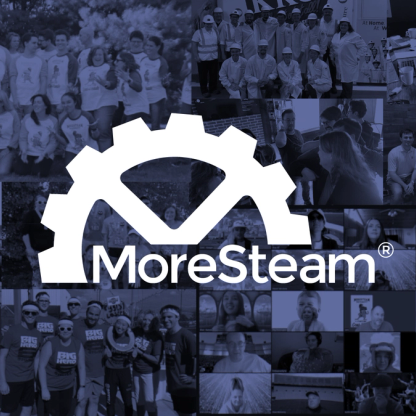
Selecting the Right Green Belt Training and Certification Program for You
May 24, 2024A Green Belt represents a crucial step between the foundational (Yellow Belt) and advanced (Black Belt) levels of Lean Six Sigma. Green Belts possess a solid understanding of Six Sigma and Lean principles, along with essential project management skills, and are trained in widely used problem-solving tools and techniques. Depending on the industry and organization, Green Belts may lead smaller projects or play a key role within larger project teams. Earning a Green Belt certification can bring increased responsibility, higher earnings, and a positive impact on your organization’s safety, efficiency, and overall success.
eLearning: The Popular Training Option
Today, there are many ways to obtain Green Belt training, with online learning, or eLearning, as one of the most popular and affordable options. eLearning offers the flexibility to study without disrupting your work, family, or social life, making it ideal for those with busy schedules. With so many eLearning programs available, you now have a wealth of choices—which can also make the decision challenging.
As you begin your search, it's important to keep the following questions in mind:
- What makes for high-quality eLearning?
- What is the difference between Green Belt training and certification, and which is right for you?
- What features should you look for in a comprehensive online Green Belt program?
- Does the program cover all essential Green Belt skills and knowledge?
When you explore your options, you’ll find that no two programs are exactly alike. Content, pricing, and certification requirements can vary widely. So, how do you choose the program that’s right for you?
The Difference Between Green Belt Training and Certification
What does it really mean to become a Green Belt? Does that mean a 'trained' Green Belt or a 'certified' Green Belt?
Green Belt training and certification are distinctly different objectives. Because training providers have often used the terms interchangeably, many professionals are confused about exactly what they'll earn from an eLearning Green Belt program.
Green Belt Training provides foundational knowledge in process improvement through structured courses. Completing training earns you a Certificate of Completion, demonstrating that you’ve engaged with and understood essential Lean Six Sigma principles. This level is ideal for those who want to acquire valuable skills without committing to full certification. Green Belt Certification, however, is a more rigorous achievement. It requires not only completing training but also passing a comprehensive exam and submitting practical project work for evaluation. Certified Green Belts are recognized as professionals with proven expertise in Lean Six Sigma, making them highly valued by organizations seeking impactful process improvements.
In short, training provides foundational knowledge and a certificate of completion, while certification involves additional steps to formally recognize your practical competence and mastery of Lean Six Sigma principles. Both paths have value: training is ideal for building essential skills, while certification further validates your expertise and commitment. Knowing the difference can help you choose the path that best aligns with your professional goals.
Why Do I Need to Complete a Project for Green Belt Certification?
Certification recognizes that you have learned the theory and successfully applied it to improve your organization's performance. Some Green Belt programs only require a few hours of study and don’t include real-world projects for certification. While these programs may seem convenient, they often prioritize speed over depth, which can leave you less prepared for practical challenges.
Some institutions are working to create a standard for Green Belt certification to improve the quality of commercial programs. They are collaborating with industry and academic partners to address inconsistencies in current programs.
Universities like The Ohio State University Center for Operational Excellence (OSU COE) and organizations like the American Society for Quality have established rigorous standards that rely on a combination of knowledge and experience. Their published Bodies of Knowledge (BoKs) outline the skills and expertise employers expect from certified Green Belts, which can be helpful guides when evaluating different programs.
Ultimately, a certification backed by successful project experience can greatly enhance your resume. It shows employers that you not only understand the tools but have also applied them effectively in real-world scenarios. Certification that includes project work helps distinguish you from others who may lack practical experience.
Asking the Right Questions – A Step-by-Step Guide
Before committing your time and money to a specific training provider, it’s essential to consider a few key questions.
Green Belt certification typically focuses on three main areas:
- The Training Course - Gain the knowledge
- The Examination - Confirm the knowledge
- The Project(s) - Apply the knowledge
Whether you’re interested in full certification or simply gaining foundational knowledge through training, understanding the requirements for each area will help you make an informed decision. By clarifying what each program offers, you’ll be better equipped to compare options and find the best fit for your goals.
The Training Course - Gain the Knowledge
The first step is acquiring the necessary knowledge. Whether you’re new to Lean Six Sigma or building on previous experience, consider the following questions to ensure the course meets your needs:
- How many hours of training are included? For Green Belts, 80 hours of online training is generally considered sufficient to cover the standard Body of Knowledge (BoK). A course offering significantly less may lack important content.
- Does the provider outline the BoK required for Green Belt certification? To assess alignment with industry standards, compare their BoK to the OSU COE and ASQ guidelines mentioned above.
- Are there any prerequisites for the course?
- Is instructor support available? If so, what format does that support take (e.g., live sessions, email, or forums)?
- Does the course include statistical software, or is that a separate cost?
- Is there a video tour or sample lesson available? Previewing the course structure and quality can help you gauge its fit for your learning style.
- What is the cost of the course?
- Is the course cost separate from the certification process?
- If I’ve completed Green Belt training elsewhere, does it align with this provider’s BoK?
The Examination - Confirm the Knowledge
The next step in certification is demonstrating your understanding of Lean Six Sigma tools and concepts. Most providers offer an online or live exam to assess your knowledge. Here are some important questions to consider about the examination process:
- How much time is allowed to complete the exam?
- What topics are covered on the exam?
- When can I take the exam? Is it available at any time, or only on set dates?
- Is the exam "open book"? Can I use resources like course material, books, software, or notes during the test?
- Does the provider offer a practice exam or study materials? If so, are these included in the course cost, or do they require an additional fee?
- What is the passing score for the exam?
- Who grades the exam? Is it automated, or does someone review the answers?
- Can I retake the exam if I fail?
- Will I receive feedback on correct and incorrect answers? This can be useful for learning and reinforcing key concepts.
The Projects - Apply the Knowledge
The final step for Green Belt certification involves demonstrating your ability to apply Lean Six Sigma principles in a real-world setting. Since project requirements vary widely among providers, consider the following questions to clarify expectations:
Is a project required for certification? If so:
- How many projects are required?
- How is each project evaluated?
- How much time am I given to complete each project?
- Is coaching support available during the project? If yes, what level of support can you expect?
- Does the provider provide project tracking software as part of the course?
- Will I have access to statistical software to help with my project as part of the course?
- Does the provider provide a project template?
- What defines a successful project?
- Which tools and techniques must be used to demonstrate proficiency in the Lean Six Sigma Green Belt (LSSGB) Body of Knowledge?
If a project is not required for certification, how is practical application assessed?
By asking these questions, you can ensure the program’s project requirements align with your learning goals and provide meaningful, practical experience.
Understanding the Value of Your Green Belt Certification
After considering the key questions above, you’ll be better equipped to make an informed decision. A Green Belt certification should be more than just a piece of paper—it should reflect real skills and confidence in applying Lean Six Sigma methods. Here are a few final considerations to ensure your certification holds real value:
- Is the provider’s Green Belt program widely recognized and respected in the field?
- Will it be easy to contact the provider on an ongoing basis? What are the provider’s preferred methods for staying in touch?
- What is the total cost of certification, including any optional components that are necessary for you?
- How long will the full certification process take from start to finish?
- Are the steps and deliverables for completing the certification clear and well-defined?
- Does this certification align with high industry standards?
- How confident will I be in applying my certification to solve real-world problems?
While this decision is exciting, it’s natural to feel some uncertainty. The right certification should provide more than just a piece of paper; it should equip you with valuable, practical skills. For a deeper dive into the selection process, including a printable cost-benefit worksheet to help compare programs, explore our white paper, which covers cost considerations and additional questions to guide your decision.
Why MoreSteam Green Belt Certification Stands Out
When choosing a Lean Six Sigma Green Belt Certification program, you want a course that not only meets industry standards but also supports your journey from training to certification with real-world application. Here’s what sets our program apart:
- Comprehensive Curriculum: Our program covers the full Lean Six Sigma Green Belt Body of Knowledge (BoK), ensuring you develop a thorough understanding of the key concepts and tools.
- Hands-On Project-Based Learning: You’ll complete real-world projects that let you apply your knowledge, backed by 3 hours of personalized 1-on-1 coaching and project support. This experience helps you build the skills needed to succeed in real-world settings.
- Instructor-Led Support: Benefit from five Virtual Instructor-Led Study Halls, where you can ask questions and get guidance from experienced instructors, helping you navigate complex topics.
- Flexible and Accessible: Our program is designed to fit into your busy schedule, with flexible online modules you can complete at your own pace.
- Exclusive Access to Key Tools:
- TRACtion for project management and tracking, to keep your project organized and on target.
- EngineRoom for statistical analysis, included at no additional cost, giving you practical experience with industry-standard software.
- Immersive Workshop Experience: 4-days of Lean Six Sigma simulation workshops where you can put your skills to the test in an interactive, hands-on environment.
- Certification Exam: Complete your Green Belt certification with a rigorous exam that validates your understanding and skills.
- Recognition and Credibility: Our certifications are well-regarded, designed to help you build skills that are highly valued by employers.
With MoreSteam's Green Belt Certification program, you’ll gain more than just a certificate—you’ll have the knowledge, tools, and confidence to apply Lean Six Sigma in real-world scenarios. Whether you’re advancing in your current role or aiming to drive impactful change in your organization, our program offers unparalleled support every step of the way.

MoreSteam's Enterprise Process Improvement platform includes the tools, training, and software you need to transform your organization, large or small, into a problem-solving powerhouse. Our products are trusted by over half of the Fortune 500 and by other organizations and universities worldwide. When you partner with MoreSteam you gain a team dedicated to helping you succeed.







